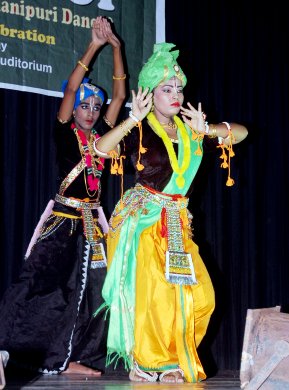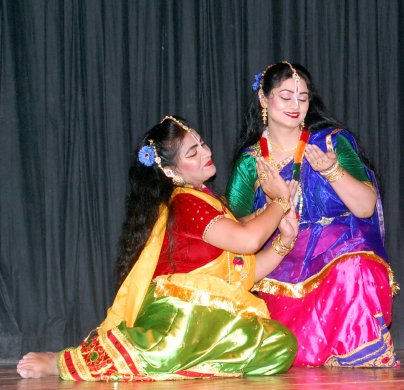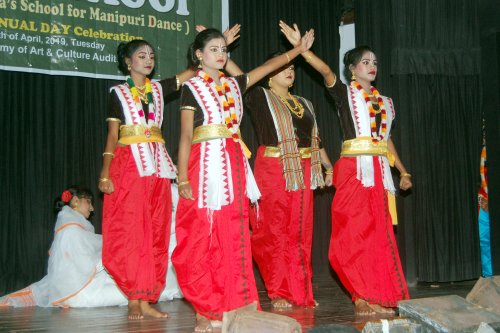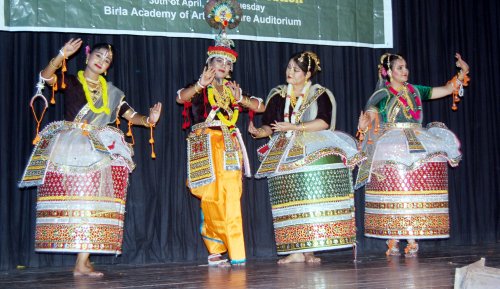
|   |

|   |
Meitei Jagoi celebrates 48 years - Tapati Chowdurie e-mail: tapatichow@yahoo.co.in June 13, 2019 Debjani Chaliha, a recipient of Rabindra Puraskar awarded by Sangeet Natak Akademi, wears many hats. A professor of philosophy, a Manipuri dancer / teacher / scholar - taught by the legendary Maisnam Amubi Singh - she celebrated the completion of 48 years of her dance institution Meitei Jagoi recently at Birla Academy of Art and Culture, in Kolkata.   Manipuri dance which is known for its soft and sweet beauty known as lasya was resorted to except when it came to Krishna maneuvering Kalia Nag and Kamsa, where the vigorous male dance 'tandava' was the norm. The stories of Krishna's miracles are household tales that have filtered down to the present age, and are for all times enjoyed if presented well through pristine classical dance forms like Manipuri. The unmixed joy of seeing the style of ancient guru Amubi Singh crisply rendered was rewarding.   There was perfect coordination among the performers. Vasudeva and Devaki -danced by Rimpa Kahar and Sreedatri Naskar - who had to part with their newborn son was poignantly presented. Father Vasudev was composed, but mother Devaki was agitated. Pallabi's role as Putana brought out the fact that far from being a total demoness, her natural motherly instincts came to the fore before she breathed her last and received salvation. Bubai Sardar put up a brave fight as Kaliya Nag at war with Krishna - danced by Rinki Mahato. Dr. Sumit Basu as Kamsa showed what stuff arrogance is, only to be subdued and annihilated. The huge contingent of well-trained Gopa balaks would have done better if the proscenium stage was large enough to give them enough space. The narrative of the Krishna legend was essayed clearly with a suitable beginning, middle and end. Radha portrayed by Sudipta Chakraborty and the Sakhis by Tania Chakraborty and Pallabee Dasgupta along with Krishna indulged in displaying beauty of Vasanta Raas in traditional Manipuri costume, with the colours of spring, ending with a fitting 'aarti' of Radha and Krishna invoking devotion. Music composition invoked the spirit of Manipur. It began with the blowing of the double conch shell, which fills all present with a positive state of mind. Th. Chourjit Singh, Kh. Premjit Singh and M. Kendra Singh played pung and dholok, while Dulal Das played the flute, wherever flautist Krishna came to the forefront. An aura of devotion permeated the hall. The production could have been savoured better had the sound system of Birla Academy been better. Tapati Chowdurie trained under Guru Gopinath in Madras and was briefly with International Centre for Kathakali in New Delhi. Presently, she is a freelance writer on the performing arts. |